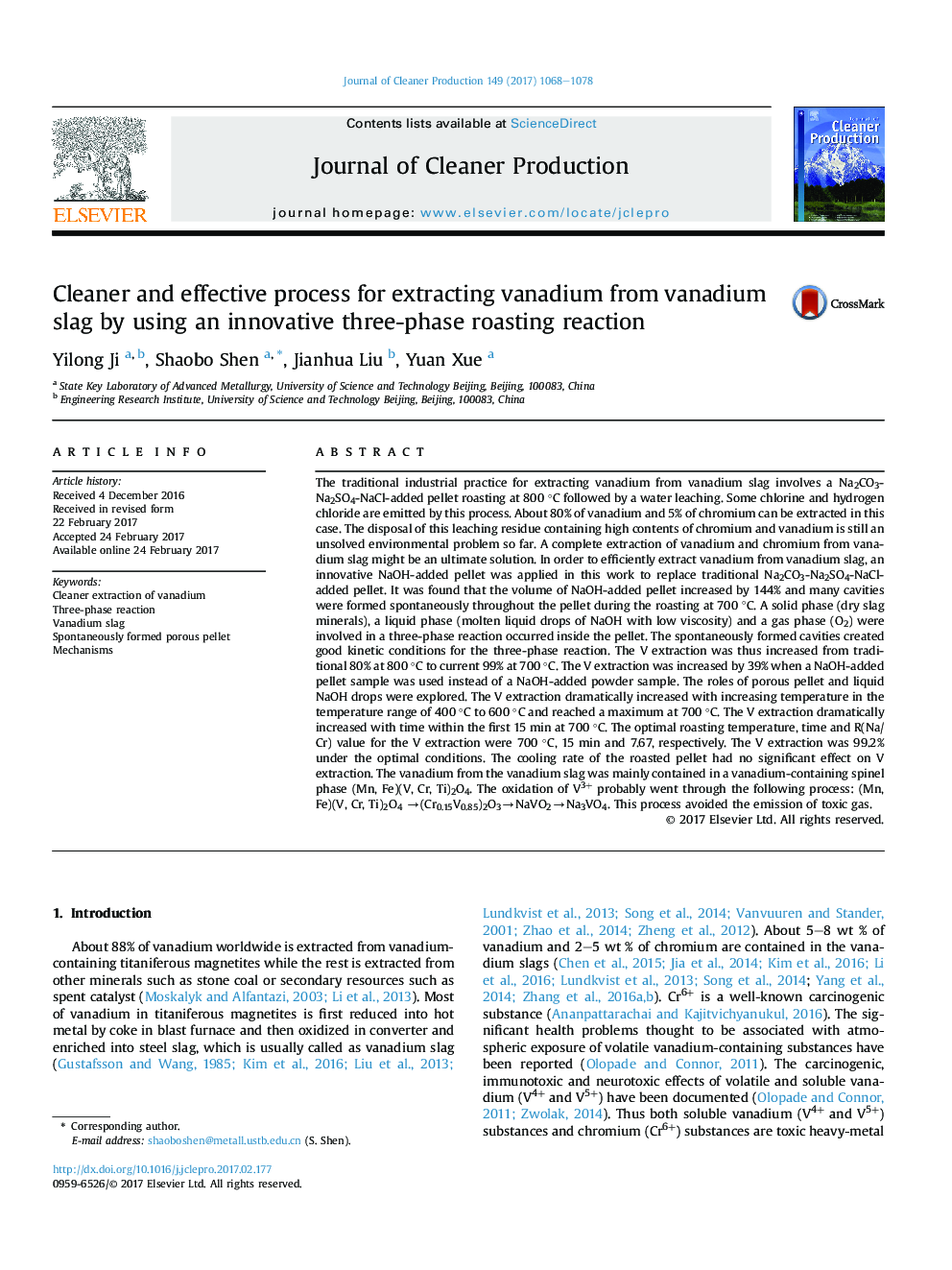| کد مقاله | کد نشریه | سال انتشار | مقاله انگلیسی | نسخه تمام متن |
|---|---|---|---|---|
| 5480803 | 1522104 | 2017 | 11 صفحه PDF | دانلود رایگان |
عنوان انگلیسی مقاله ISI
Cleaner and effective process for extracting vanadium from vanadium slag by using an innovative three-phase roasting reaction
ترجمه فارسی عنوان
فرآیند پاک کننده و موثر برای استخراج وانادیوم از سرباره وانادیوم با استفاده از یک واکنش سریع سه فاز بوجاری
دانلود مقاله + سفارش ترجمه
دانلود مقاله ISI انگلیسی
رایگان برای ایرانیان
کلمات کلیدی
استخراج پاک کننده وانادیوم، واکنش سه فاز، سرباره وانادیوم، به طور خودبهخودی تشکیل پودر متخلخل، مکانیسم،
موضوعات مرتبط
مهندسی و علوم پایه
مهندسی انرژی
انرژی های تجدید پذیر، توسعه پایدار و محیط زیست
چکیده انگلیسی
The traditional industrial practice for extracting vanadium from vanadium slag involves a Na2CO3-Na2SO4-NaCl-added pellet roasting at 800 °C followed by a water leaching. Some chlorine and hydrogen chloride are emitted by this process. About 80% of vanadium and 5% of chromium can be extracted in this case. The disposal of this leaching residue containing high contents of chromium and vanadium is still an unsolved environmental problem so far. A complete extraction of vanadium and chromium from vanadium slag might be an ultimate solution. In order to efficiently extract vanadium from vanadium slag, an innovative NaOH-added pellet was applied in this work to replace traditional Na2CO3-Na2SO4-NaCl-added pellet. It was found that the volume of NaOH-added pellet increased by 144% and many cavities were formed spontaneously throughout the pellet during the roasting at 700 °C. A solid phase (dry slag minerals), a liquid phase (molten liquid drops of NaOH with low viscosity) and a gas phase (O2) were involved in a three-phase reaction occurred inside the pellet. The spontaneously formed cavities created good kinetic conditions for the three-phase reaction. The V extraction was thus increased from traditional 80% at 800 °C to current 99% at 700 °C. The V extraction was increased by 39% when a NaOH-added pellet sample was used instead of a NaOH-added powder sample. The roles of porous pellet and liquid NaOH drops were explored. The V extraction dramatically increased with increasing temperature in the temperature range of 400 °C to 600 °C and reached a maximum at 700 °C. The V extraction dramatically increased with time within the first 15 min at 700 °C. The optimal roasting temperature, time and R(Na/Cr) value for the V extraction were 700 °C, 15 min and 7.67, respectively. The V extraction was 99.2% under the optimal conditions. The cooling rate of the roasted pellet had no significant effect on V extraction. The vanadium from the vanadium slag was mainly contained in a vanadium-containing spinel phase (Mn, Fe)(V, Cr, Ti)2O4. The oxidation of V3+ probably went through the following process: (Mn, Fe)(V, Cr, Ti)2O4 â(Cr0.15V0.85)2O3âNaVO2âNa3VO4. This process avoided the emission of toxic gas.
ناشر
Database: Elsevier - ScienceDirect (ساینس دایرکت)
Journal: Journal of Cleaner Production - Volume 149, 15 April 2017, Pages 1068-1078
Journal: Journal of Cleaner Production - Volume 149, 15 April 2017, Pages 1068-1078
نویسندگان
Yilong Ji, Shaobo Shen, Jianhua Liu, Yuan Xue,
